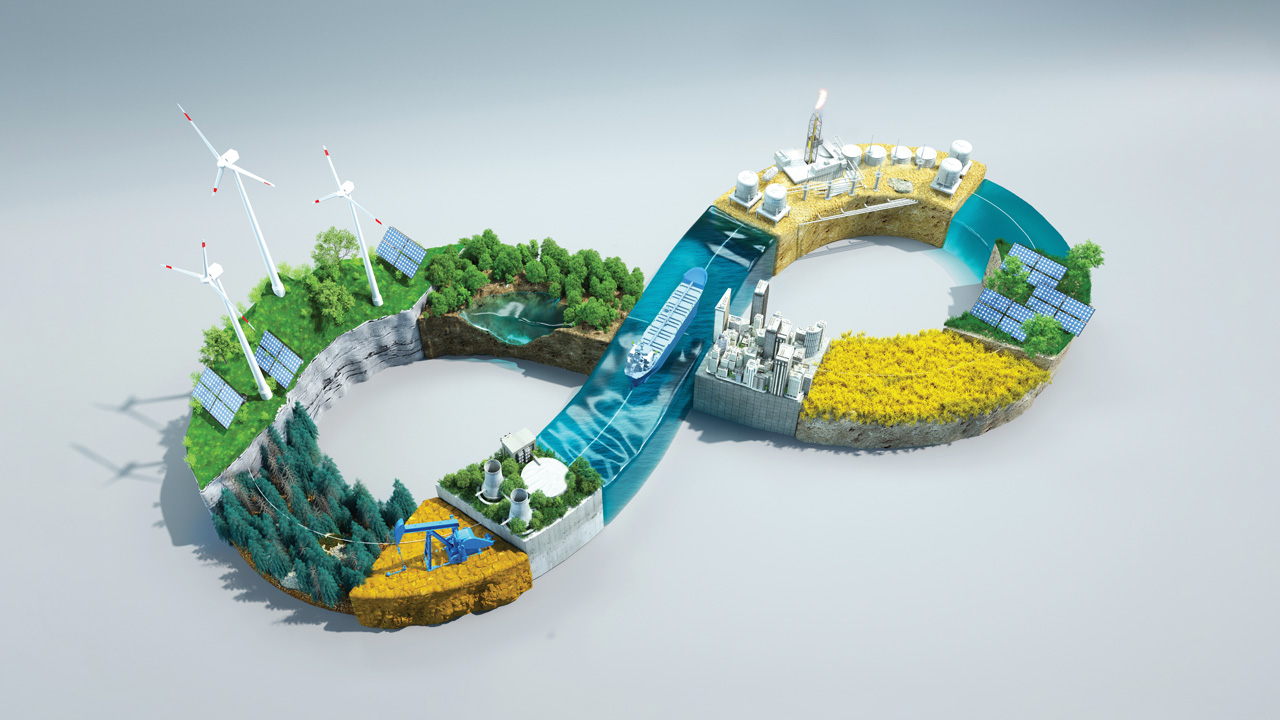The Interconnected Ecosystem of Environmental, Power and Infrastructure Services
Multi-decade themes create an attractive investment backdrop

The interconnected ecosystem surrounding power generation and delivery, natural resources and the environment, and water, waste and other infrastructure has seen significant disruption in recent years. Companies operating in the environmental, power and infrastructure services subsector are being impacted by several long-term trends that have created a dynamic backdrop across this ecosystem:
• Aging infrastructure that requires significant ongoing investment
• Evolving power generation sources with the expansion of renewables
• Increasing electrification of society and reliance on last-mile infrastructure
• Rising awareness of the need to find more sustainable practices across industries
Identifying differentiated business models that are propelled by these trends presents a compelling opportunity for investors to partner with value-added solutions providers.
Ridgemont Equity Partners has built a thesis-driven investing effort in the environmental, power and infrastructure services subsector. Two relevant investments are Sparus Holdings and Northstar Recycling. Sparus is a provider of field-based and professional services for utility and infrastructure markets, while Northstar is an asset-light provider of sustainability-oriented managed waste and recycling solutions to food, consumer packaged goods and other industrial clients.
Ridgemont and its portfolio company management teams have identified several critical themes that will continue to drive business activity and evolution in the environmental, power and infrastructure services subsector:
Identifying differentiated business models that are propelled by these trends presents a compelling opportunity for investors to partner with value-added solutions providers.
Aging Mission-Critical Infrastructure with Increasing Strain
The American Society of Civil Engineers recently published a Report Card for America’s Infrastructure that graded the existing installed base of U.S. infrastructure a C-minus overall. Beyond the in-place infrastructure receiving a below-average grade, critical U.S. infrastructure is also aging rapidly and is increasingly strained by population growth and migration and evolving business practices. Over time, maintaining America’s infrastructure will require additional investment, and this backdrop creates opportunities.
For example, the U.S. power supply is evolving rapidly with renewables taking share from traditional fossil fuels and power generation becoming more distributed. Meanwhile, society is becoming increasingly electrified, and consistent and reliable electricity has become more critical. Yesterday’s power grid cannot accommodate all these changes. Service providers that upgrade, inspect, test, maintain and repair infrastructure will play an increasing role in reducing the strain on aging infrastructure and enabling the ongoing transition in power generation and delivery.
Related content: Utilities Investors Charge Up for Vegetation Management
Similarly, landfills have long been the traditional disposal location of America’s waste. But landfill capacity is limited and will continue to be constrained due to regulation, permitting limitations and environmental concerns. This shifting landscape creates opportunities for innovative companies to provide differentiated waste reduction, recovered material reuse and recycling solutions.
Increasingly Complex Regulatory and Compliance Requirements
Laws and regulations impacting the environmental, power and infrastructure services ecosystem continue to expand in scope and complexity. At the same time, the economic and reputational cost of infrastructure failure or other non-compliance is rising. Today’s asset owners and operators must adhere to ever-growing compliance requirements, while still focusing on their core competencies in running their operations.
To do so more effectively, many of these entities are turning to outsourced service providers that can deliver critical services with specialized expertise.
For example, as commerce and daily life increasingly rely on consistent electricity supply, and pressures to the electric grid mount from general infrastructure aging, disruptive weather events and security threats, the stakes are getting higher for utilities to provide safe and reliable power. With dwindling internal workforces, utilities rely upon outsourced providers to maintain, upgrade and harden their infrastructure to ensure their ability not only to provide reliable power but also to do it in a manner that is compliant with regulatory safety standards.
Similarly, producers of emissions, whether from industrial manufacturing or production processes, often utilize testing, inspection and monitoring firms to make sure they meet air and water quality standards and emission limits. These same types of companies also frequently rely on liquid waste collection or water treatment providers to ensure regulatory discharge requirements are met and to maintain proper water and waste processing and treatment.
Compelling ESG Demand Drivers
ESG initiatives are driving growth in the environmental, power and infrastructure services subsector as the business and investment communities increasingly incorporates initiatives focused on environmental sustainability and societal impacts into their strategic plans. Examples include increased renewable power generation, heightened focus on limiting emissions and technological advancement to increase the reuse and recyclability of materials.
Related content: Water Utilities Investors Take On Climate Change
Today, renewable power sources account for more than 20% of U.S. electricity generation. Trillions of dollars have been invested globally in the build-out of renewable power sources. Such investment will continue at scale, which will provide ongoing opportunities for businesses that offer construction and related services and electricity distribution within this ecosystem. Importantly, the associated renewable power infrastructure will require recurring service, maintenance and repair as it ages, creating attractive growth opportunities for innovators offering high-quality solutions for renewable power infrastructure owners. Beyond renewable power generation, other areas of technological disruption in the electrical ecosystem creating compelling growth opportunities include distributed generation, the build-out of electric vehicle charging networks, the proliferation of battery storage and backup power management.
Just as renewable power and green electricity themes are pervasive, waste diversion and the beneficial reuse of resources represent significant opportunities garnering increasing attention from both corporate entities and the investment community. In a society where minimizing environmental impacts from operating businesses and consuming resources is a top priority, technologies and services that enable waste diversion, the beneficial reuse of resources or recycling material in a cost-effective manner should continue to grow rapidly and create investment opportunities.
Ryan Jack is a partner at Ridgemont Equity Partners and focuses on investments in the industrial growth sector, including the environmental, power and infrastructure services subsector.

Middle Market Growth is produced by the Association for Corporate Growth. To learn more about the organization and how to become a member, visit www.acg.org.


